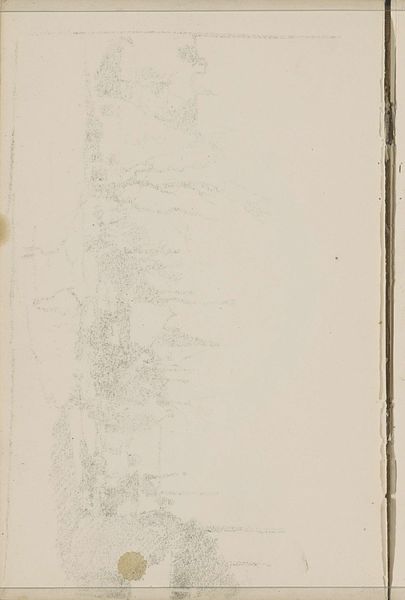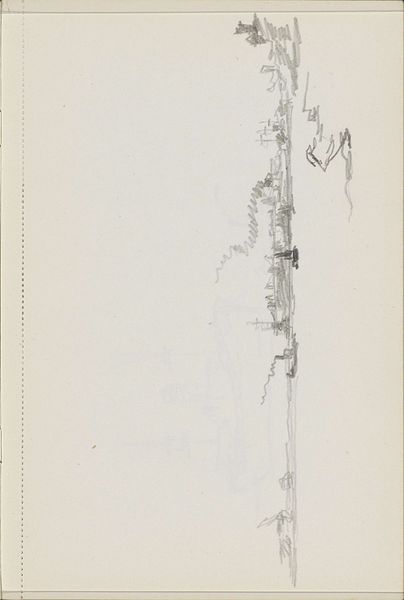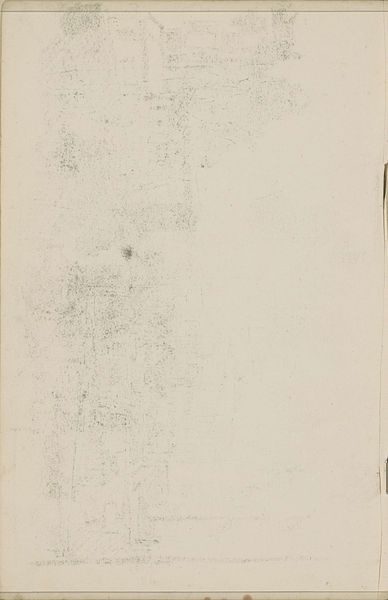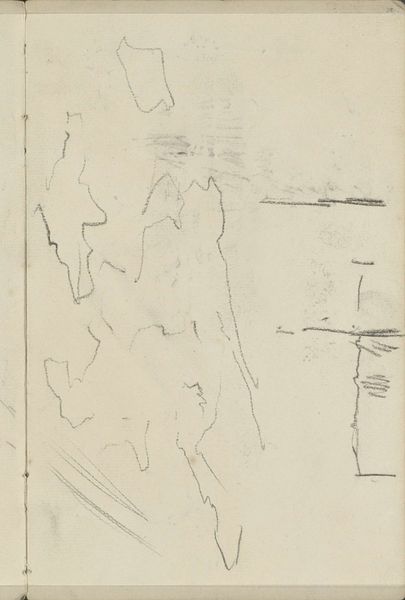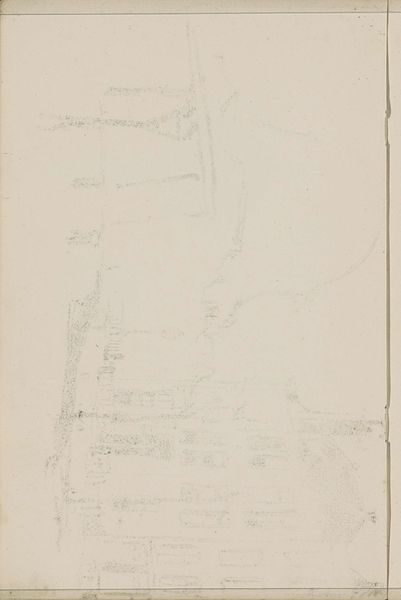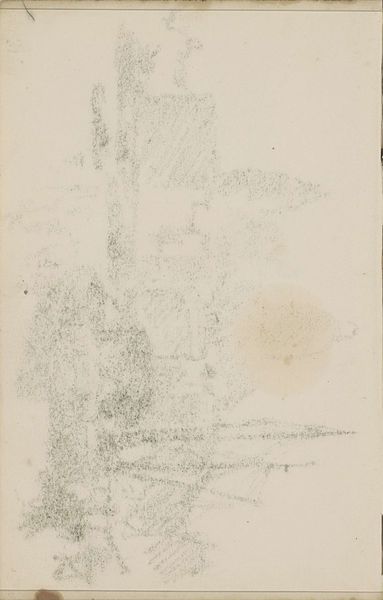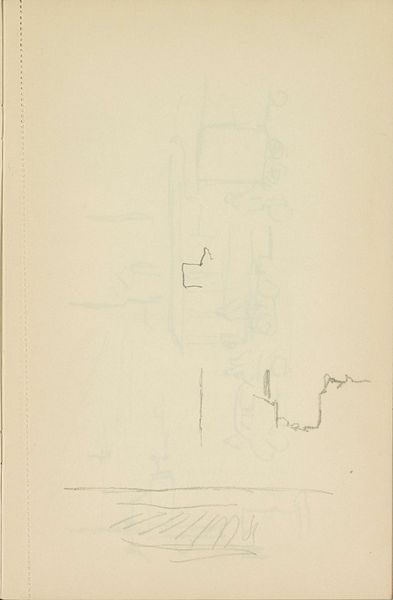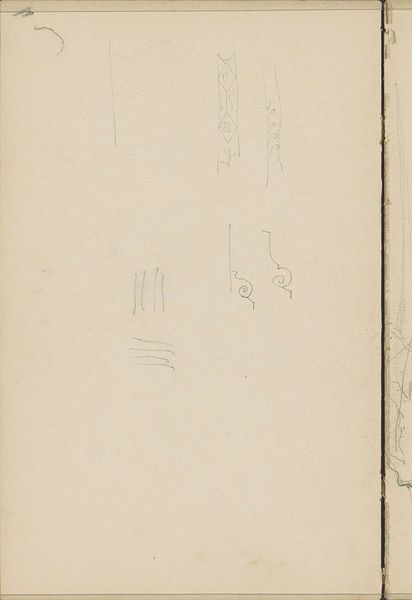
drawing, paper, pencil, graphite
#
drawing
#
amateur sketch
#
aged paper
#
toned paper
#
light pencil work
#
homemade paper
#
incomplete sketchy
#
hand drawn type
#
landscape
#
etching
#
paper
#
pencil
#
line
#
graphite
Copyright: Rijks Museum: Open Domain
Curator: We're looking at "Abklatsch van een krijttekening," or "Print of a Chalk Drawing," crafted between 1890 and 1946. The artist is Cornelis Vreedenburgh, and it resides here in the Rijksmuseum. It’s rendered in graphite and pencil on paper. Editor: Wow, it feels like glimpsing a ghost of a place. All soft, faded lines... almost ethereal. Like a memory barely clinging to the paper. Curator: That's interesting. Consider how Vreedenburgh’s technique reflects broader artistic movements of the late 19th and early 20th centuries. There’s a sense of capturing a fleeting impression. We might think about the development of photography, and its impact on artistic expression. How does the medium of pencil drawing serve or diverge from those advancements? Editor: Well, a photo *captures*, but this...it feels like searching. Like the artist was trying to conjure something just out of reach, layer by layer, imperfectly. There’s so much delicate erasure here. What I mean to say is: there’s an intentionality to its softness. Curator: Precisely. And perhaps that evokes the socio-political landscapes as well—this pursuit of memory amidst turbulent times of revolution. Erasure as part of both creative, and destructive processes? Editor: Hmmm. Perhaps there’s also just, you know, the feeling of a quiet afternoon. Look, the details are vague, but I think the overall effect is not turbulent at all. I mean, look at this paper. Toned with age. Curator: Indeed. Thinking about archival practices helps reveal how time etches narratives of power. Which memories are highlighted and why? This aging is itself is an historical testament. Editor: But also, there's something genuinely peaceful about the incompleteness, though, right? As if it allows our imagination to breathe in ways a more detailed work wouldn't. I'd happily get lost in it. Curator: A fair point. Maybe the invitation, after all, lies precisely there—to reflect and construct. To reclaim visual agency in times of chaos. Editor: So, we begin to conjure what Vreedenburgh tried to evoke so gently… that feels profound to me. A very lovely start for our collection of impressions.
Comments
No comments
Be the first to comment and join the conversation on the ultimate creative platform.
